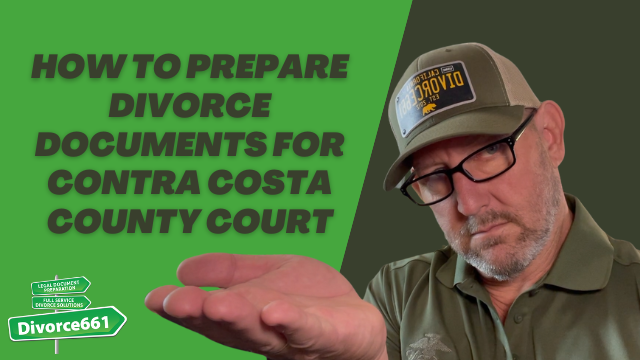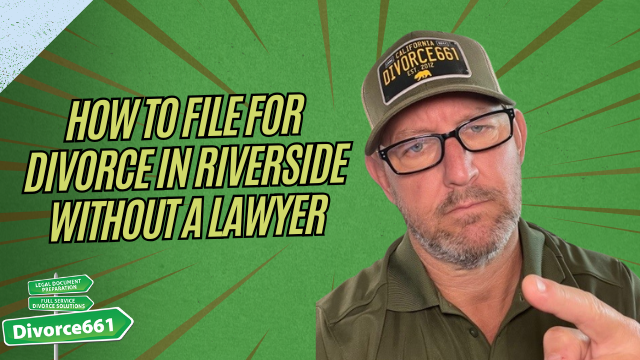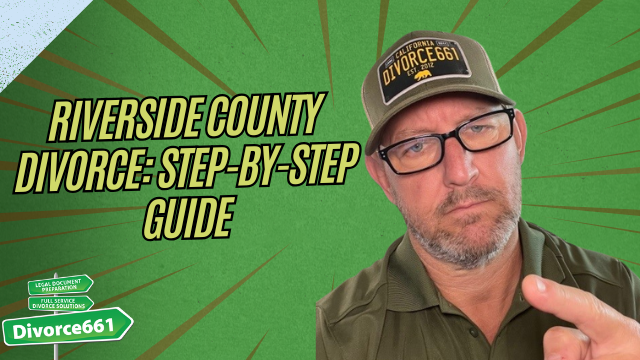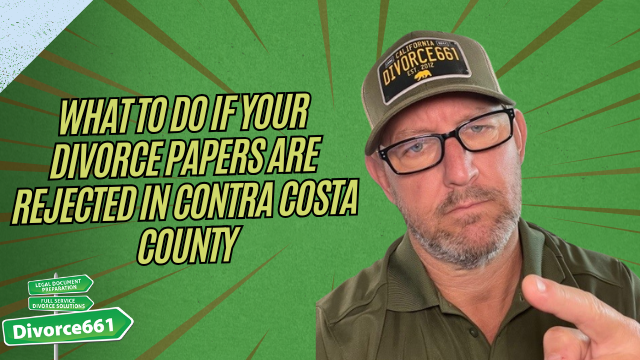How to Prepare Divorce Documents for Contra Costa County Court
Hi, I’m Tim Blankenship from Divorce661. If you’re planning to file for divorce in Contra Costa County, getting your paperwork right the first time can save you weeks or months of stress and delay. California uses many standardized forms, but each county — including Contra Costa — has its own expectations and strict review process. Below I’ll walk you through the steps, common pitfalls, and how to get your final judgment package approved the first time.
Doing it right the first time can save you a lot of time and stress.
Overview: The Basic Steps
- File the initial forms with the court.
- Serve your spouse properly and file proof of service.
- Complete and exchange preliminary financial disclosures.
- Draft a marital settlement agreement (if you’re in agreement) and prepare the final judgment package.
Step 1 — File the Initial Forms
Start your case by filing the required initial forms with the Contra Costa County Court. The key documents are:
- Petition (FL-100 or applicable petition form)
- Summons (FL-110)
- UCCJEA Declaration (if you have children) — this is the declaration under the Uniform Child Custody Jurisdiction and Enforcement Act
Once the court accepts your filing you’ll receive a case number. That case number is important — it’s the official start of your divorce and the timeline for many deadlines begins at filing.
Step 2 — Serve Your Spouse Correctly
Contra Costa is particular about service. Two important rules to remember:
- You cannot serve the documents yourself. Someone else must serve the papers and then file proof of service with the court.
- If your spouse is cooperative, a Notice of Acknowledgement and Receipt (a written acknowledgment that they received the documents) is a fast and easy way to complete service and avoid extra steps.
Failing to properly serve or to file correct proof of service is a common reason courts delay or reject later filings.
Step 3 — Exchange Preliminary Financial Disclosures
Even if you and your spouse agree on everything, California requires both parties to complete and exchange preliminary financial disclosures. These include:
- Schedule of Assets and Debts
- Income and Expense Declaration
Many people try to skip this step or fill the disclosures out incorrectly. In Contra Costa, incomplete or inaccurate disclosures are a frequent reason final judgments are rejected. Make sure the figures match supporting documents and that both parties have a complete, signed set of disclosures on file.
Step 4 — Draft the Marital Settlement Agreement and Final Judgment Package
If you and your spouse are in agreement, you’ll prepare a Marital Settlement Agreement (MSA) that spells out division of assets, debts, support, custody and visitation (if applicable), and other terms. Then you must assemble the final judgment package for the court’s approval.
Contra Costa County courts are strict when reviewing final judgment packages. A missing signature, an incorrect form version, or a small formatting error can cause a rejection and send your case back for corrections — often adding weeks or months to the process.
What to check carefully before submission
- All required signatures are present and dated.
- The correct form versions (check the court’s current form list).
- All supporting documents referenced in the judgment are attached.
- Financial disclosures have been exchanged and filed.
- All deadlines and waiting periods have been observed.
Common Mistakes That Cause Rejection
- Skipping required disclosures or submitting incomplete financial schedules.
- Attempting to self-serve or failing to file proof of service correctly.
- Using outdated form versions or missing signatures.
- Not following county-specific formatting or filing instructions.
These might seem like small details, but Contra Costa reviewers watch for them closely. A single oversight can mean multiple resubmissions and unnecessary delays.
Real Client Example
We recently helped a client who had tried to complete the paperwork themselves. Their initial judgment was rejected twice. They were understandably frustrated and just wanted the divorce finalized. We reviewed the entire packet, corrected the issues (missing signatures, disclosure inconsistencies, and a formatting problem), resubmitted, and the judgment was approved without further problems.
How Divorce661 Can Help
At Divorce661 we focus on preparing and filing divorce paperwork specifically for Contra Costa County. Our experience with the county’s expectations helps avoid the common mistakes that cause rejections.
- Accurate preparation of all required documents
- Clear instructions and follow-up for proper service
- Final judgment packages assembled to meet Contra Costa standards
- Flat-fee, 100% remote service to make the process easier
Next Steps
If you want to make sure your divorce paperwork is prepared correctly and accepted the first time, schedule a free consultation at Divorce661. Visit divorce661.com to get started. We’ll take over the paperwork, walk you through every step, and help you move forward with confidence.
Conclusion
Filing for divorce in Contra Costa County doesn’t have to be a long, frustrating process — but you do need to respect the court’s strict requirements. File the initial forms properly, serve your spouse the right way and file proof, complete and exchange financial disclosures, and assemble a clean, complete final judgment package. Pay attention to the small details, and if you run into problems, get help from someone familiar with Contra Costa’s rules so your case isn’t delayed unnecessarily.
If you have questions or want help preparing your documents, visit divorce661.com to schedule a free consultation.










